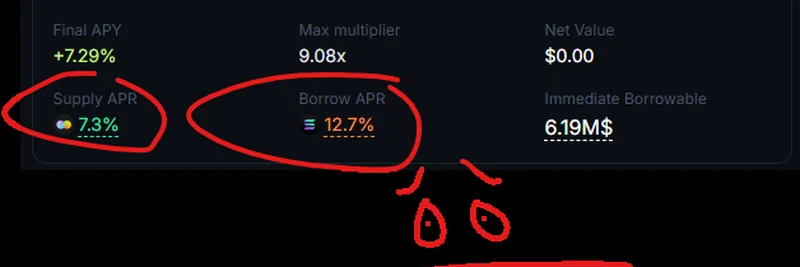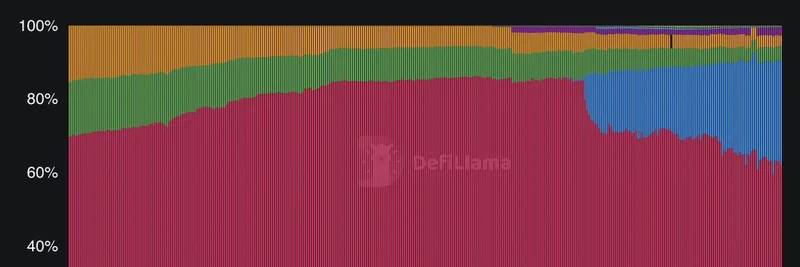In the fast-paced world of Solana DeFi, things can shift quickly—especially when it comes to liquid staking tokens (LSTs) and leveraged strategies like Multiply positions. A recent thread from James Hanley, a generalist at Sanctum, sheds light on the concerns bubbling up among holders of INF Multiply positions. If you're unfamiliar, INF is Sanctum's Infinity pool, essentially a basket of top LSTs that aims to deliver higher yields through diversified staking and trading fees. Multiply, on the other hand, is a leveraged looping strategy where you borrow SOL to amp up your exposure to these yields.
Hanley's post comes at a timely moment, as a 24-hour liquidity crunch on Solana pushed borrow rates sky-high, turning many Multiply APYs (annual percentage yields) negative. But before you panic and unwind, let's break down what happened and why waiting might be the smarter play.
The Liquidity Crunch and Spiked Borrow Rates
Over the past day, Solana saw a massive surge in demand for unstaked SOL, drying up on-chain liquidity. This "flash shock" sent borrow rates on platforms like Jupiter Lend soaring—think double digits, like 12.7% or higher. For Multiply users, this is a big deal because the strategy bets that your LST's yield will outpace the cost of borrowing SOL. When borrow rates spike, that bet goes underwater, showing negative final APYs.
Hanley points out that these spikes are usually short-lived. Market forces kick in: users unwind loops, or lenders pile in to capture the high yields, bringing rates back down. If you're holding an INF Multiply position, this temporary pressure might not warrant immediate action.
Why INF's APY Dipped After a Strong Launch
INF launched on Jupiter Lend just last week and crushed it, with TVL (total value locked) in SOL terms jumping 22% in a little over a week. But the APY in recent epochs? Not so hot. Hanley explains this as a "suffering from success" scenario. When fresh SOL deposits flood in, it takes an epoch (about 2-3 days on Solana) for that SOL to start staking and earning inside INF. Until then, it drags the headline APY down temporarily.
Good news: Sanctum has upgrades in the pipeline to minimize this drag. Plus, INF's design means it often outperforms average LST yields over time, with occasional big spikes.
What Powers INF's Yield and Future Outlook
INF earns from two main sources: the weighted average yield of its underlying LSTs, plus extra trading fees from swaps routed through the pool. In high-activity periods—like the recent frenzy—swap volumes explode, funneling more fees into INF. These show up in APY a epoch or two later, potentially leading to juicy spikes.
High network activity also boosts priority fees and MEV (miner extractable value), which lifts LST yields overall. Since INF is a diversified basket, it captures that upside too. Hanley predicts APY bumps in the coming epochs, making it worth holding through the storm.
Should You Unwind Your Position Now?
Tempted to exit? Think twice. Unwinding incurs swap fees to repay borrowed SOL, and with the current liquidity shortage, it could get pricey—some users reported costs as high as 70 SOL. Plus, you'd miss out on those incoming fee boosts from recent activity.
Hanley's advice: Wait an epoch or two. Borrow rates should normalize, and INF's reserves will top up with unstaked SOL, easing liquidity for everyone. As a bonus, the next epoch might deliver "juiced up" APYs.
Key Takeaways for Solana DeFi Enthusiasts
This episode highlights the risks and rewards of leveraged LST strategies on Solana. Tools like Multiply can supercharge yields, but they're sensitive to market swings. If you're in INF, Hanley's thread suggests patience could pay off—literally.
For more on Sanctum's INF and similar projects, check out Sanctum의 공식 사이트 or Jupiter Lend. And if you're diving into Solana's meme token scene, remember that these liquidity events often tie back to viral pumps and trades driving network demand.
Stay tuned to Meme Insider for more breakdowns on blockchain trends, meme tokens, and DeFi strategies that keep you ahead in the crypto game.


